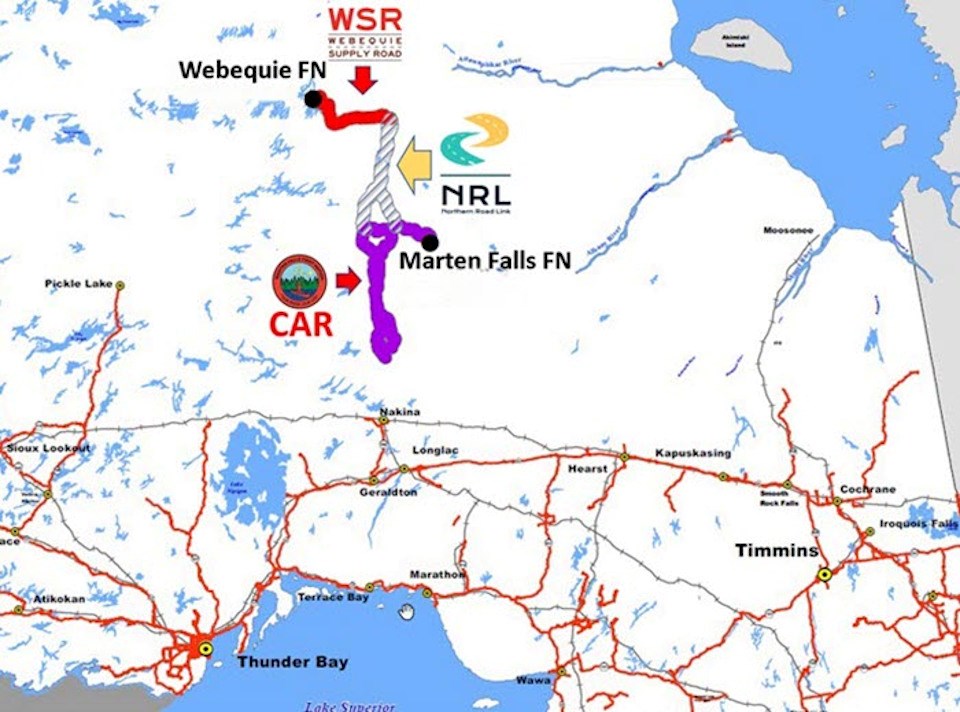The provincial environment assessment (EA) process is beginning on the middle section for the Ring of Fire road.
Marten Falls and Webequie First Nations, the community road proponents, issued a news release that the EA process is ready to begin on the section of road between Marten Falls and Webequie, dubbed the Northern Road Link.
The two remote communities in the James Bay region, who are the road proponents, said the Notice of Commence for this environmental study's terms of reference – basically, the work plan for how this EA will take shape – will come out tomorrow, May 4.
The Notice of Commencement formally kicks off the planning process for EA. What will follow is months of consultation with community members and various stakeholders of any concerns and questions in order to prepare a draft of the terms of reference.
The release said the Ontario government has final say on those terms of reference prior to the start of the EA process.
Want to read more stories about business in the North? Subscribe to our newsletter.
The Northern Road Link is the second stage of the proposed permanent road into the James Bay mineral belt that would connect the Marten Falls Community Access Road, to the south, and the shorter Webequie Supply Road, running from the Webequie Airport to the remote mineral exploration camp at McFaulds Lake.
This would be a 120-kilometre-long, north-south, two-lane gravel road that would be used by residents of the communities to reach the provincial highway system for the first time. The mining industry would also use it to shuttle people, supplies and material into the exploration and future mining camp, and transport raw bulk ore material out for processing in Sudbury and Sault Ste. Marie.
"This Notice of Commencement is a significant milestone for our First Nations and one that has taken over 10 years to materialize," said Marten Falls First Nation Chief Bruce Achneepineskum.
"We share a common vision with Webequie to change how development occurs in our traditional territory. Today, we are leading the planning and assessment of this project to ensure that environmental risks to our traditional ways of life are thoroughly assessed and mitigated, and that opportunities for First Nations people are maximized."
Achneepineskum said the road project offers the opportunity to bring "economic reconciliation" for remote First Nations in Ontario.
Sign up for the Sudbury Mining Solutions weekly newsletter here.
The May 3 release said this an Indigenous-led EA process that will involve traditional knowledge and consultation with community members. The chiefs' stated commitment is use best practices to safeguard the environment during the road building process.
"One of the main reasons we are leading this environmental assessment is to exercise our jurisdiction and inherent rights, as well as to generate the necessary information to make informed decisions about the future of the lands and prosperity of our members through self-determination," added Webequie Chief Cornelius Wabasse.
"We are hopeful that our neighbouring First Nations will trust us to lead this planning work responsibly, respecting traditional protocols, clan families and environmental concerns."




